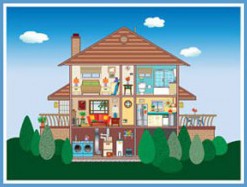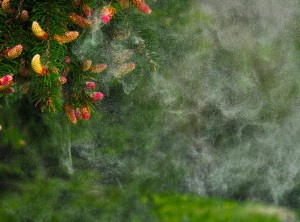Minimizing allergen contact is the first line management for allergic diseases. Perennial or year-round symptoms are caused mostly by indoor allergens. Seasonal symptoms or hay fever are caused by airborne pollens in different seasons.
 Perennial Allergens
Perennial Allergens
 Hay Fever / Seasonal Allergens (Pollens)
Hay Fever / Seasonal Allergens (Pollens)
- Tree pollens: early spring; March-May
- Grass pollens: late spring, early summer; May-June
- Ragweed and weed pollens: August-first frost
Minimize outdoor activity on days when pollen counts are high, especially on windy days, late evenings, and early mornings. Pollens are usually released from trees and plants – between 5AM and 10AM.
- Stay indoors if possible when the pollen count is high and on windy days when pollen is blowing around.
- Put a hat on when going outdoors. Wipe face, eyebrows, eyelashes, and nose with cold water, change clothes or take a bath after staying outdoors.
- Close all windows at night.
- Air conditioning decreases indoor pollen counts if it re-circulates indoor air instead of drawing in outside air.
- Fans in the attic or other rooms may aggravate the problem by drawing in outside air with high pollen counts.
- Keep car windows closed and, if possible, have air conditioning in the car.
- Consult with your allergist before you plant trees and shrubs around your house.
Check today’s pollen count at www.pollen.com